From organic cotton towels to stainless steel water bottles, there are many non-toxic household items that can replace their toxic counterparts. These simple swaps not only reduce your exposure to harmful chemicals but also contribute to a more sustainable lifestyle.
Your kitchen is a great place to start when switching to non-toxic products. Choose items like bamboo cutting boards, reusable beeswax wraps for food storage, and stainless steel drinkware. These holistic swaps reduce your reliance on plastic and harmful chemicals, creating a safer and more eco-friendly kitchen environment.
Investing in high-quality, non-toxic products can enhance your home and well-being
So if you’re considering how to go chemical-free at home, let’s take a look at some simple non toxic swaps that you’re going to want to impliment right away!
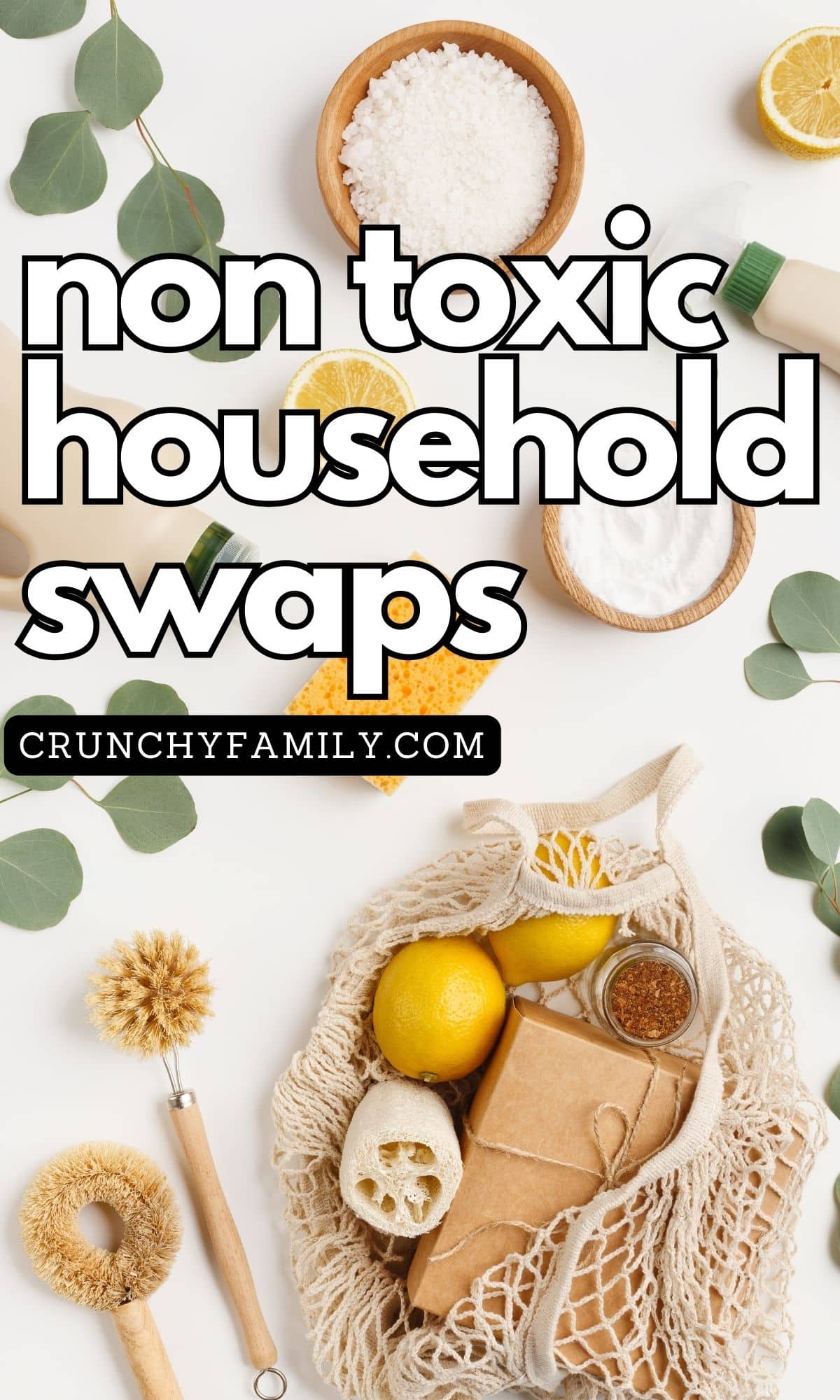
Swap Plastic Food Storage for Glass Containers
Switching from plastic to glass food storage is one of the simplest yet most impactful non-toxic kitchen swaps you can make.
Unlike plastic, glass doesn’t leach harmful chemicals into your food, even when heated. It’s durable, dishwasher-safe, and keeps your food fresher for longer.
This swap is a must for anyone striving for non-toxic living, as it reduces your exposure to toxic chemicals and helps you achieve a toxin-free kitchen.
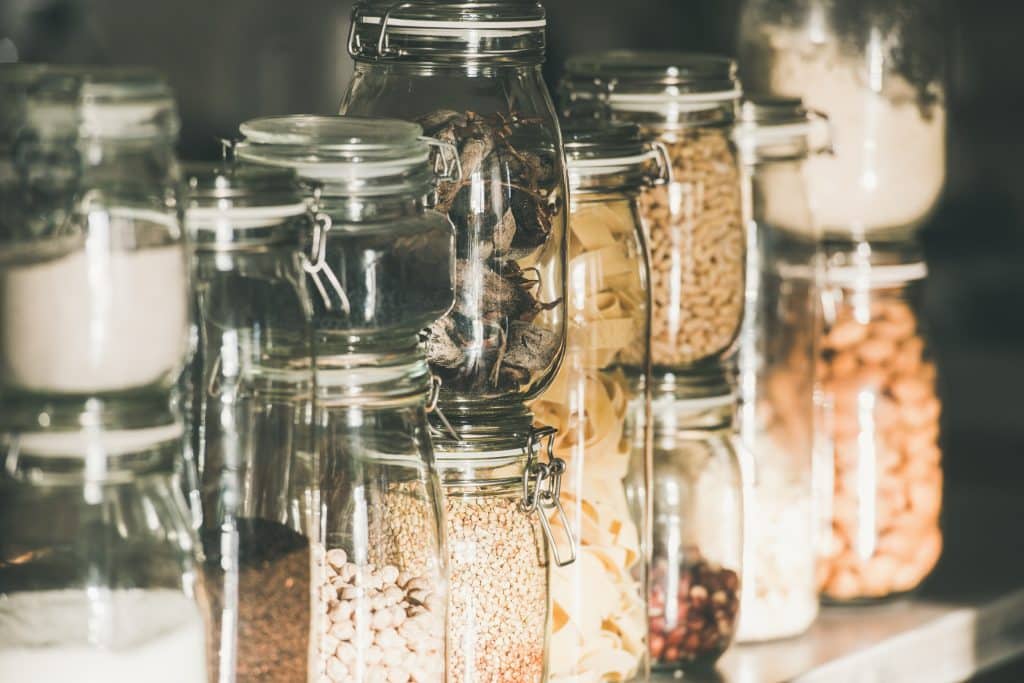
Choose Stainless Steel Over Plastic Kitchen Utensils
Plastic kitchen utensils can release harmful chemicals, especially when exposed to heat. Switching to stainless steel utensils is a great way to reduce toxins in your kitchen.
Stainless steel is not only safer but also more durable and easier to clean. This non-toxic kitchen swap enhances your cooking experience and promotes a healthier lifestyle.
Opt for Cast Iron Cookware Instead of Non-Stick Pans
Non-stick pans often contain harmful chemicals that can flake off into your food over time. Cast iron cookware is a fantastic non-toxic alternative that can last a lifetime.
Cast iron pans are perfect for a wide range of cooking tasks, from frying to baking, and they add a little extra iron to your diet, which is a nice bonus for your health.
Use Essential Oils for Natural Air Freshening
Traditional air fresheners can be full of synthetic fragrances and harmful chemicals that degrade indoor air quality. Instead, use essential oils to freshen up your home naturally.
Whether you diffuse lavender for relaxation or citrus oils for a burst of energy, essential oils are a non-toxic way to improve your home’s air quality.
Switch to Organic Cotton Bedding
Our skin is our largest organ, and it absorbs whatever it comes into contact with, including the chemicals in our bedding.
Organic cotton is grown without harmful pesticides and processed without toxic chemicals, making it a much healthier option for your family. Investing in organic cotton bedding is a simple swap that promotes better sleep and overall health.
Use White Vinegar Instead of Harsh Bathroom Cleaners
White vinegar is a fantastic non-toxic alternative for cleaning bathrooms. Its natural acidity helps break down soap scum, remove mold, and disinfect surfaces without the harmful chemicals found in many commercial bathroom cleaners.
Simply mix equal parts white vinegar and water in a spray bottle for an effective bathroom cleaner.
White vinegar is one of the most versatile cleaning swaps for your nontoxic home and can be used to clean so many things.
Clean Windows with a Vinegar and Water Solution
Instead of using commercial glass cleaners that contain ammonia and other chemicals, mix one part white vinegar with two parts water in a spray bottle.
This solution effectively cleans windows, mirrors, and glass surfaces, leaving them streak-free and sparkling clean without the toxic fumes.
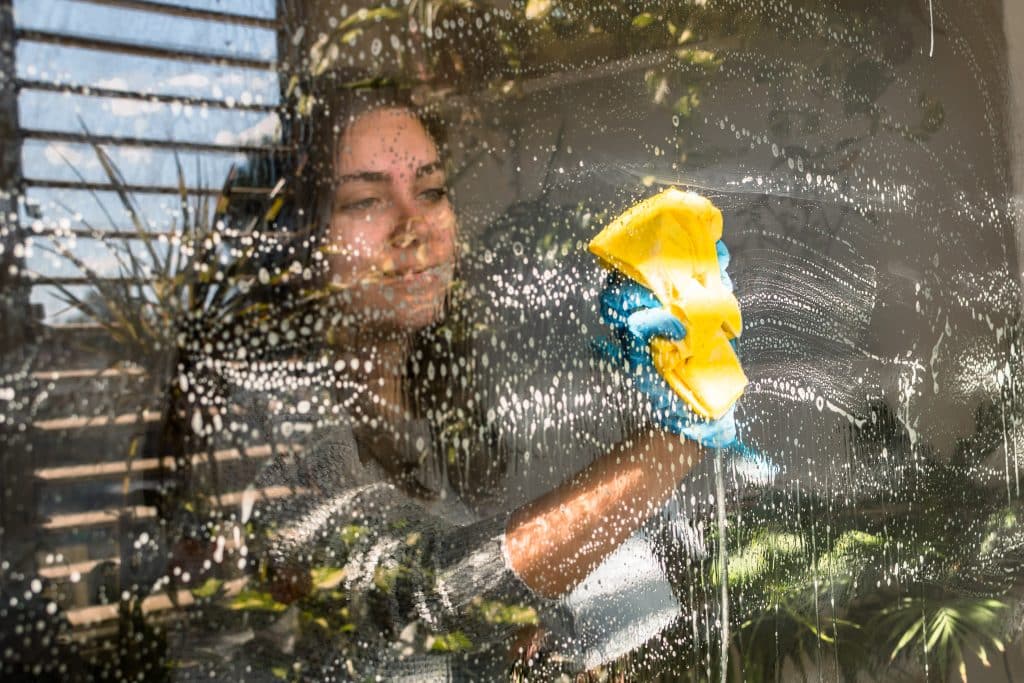
Freshen Carpets with Baking Soda
Traditional carpet deodorizers can contain synthetic fragrances and other harmful chemicals.
Sprinkle baking soda on your carpets, let it sit for 15-20 minutes, and then vacuum it up. Baking soda naturally neutralizes odors, leaving your carpets fresh without any toxic residue.
Use Lemon Juice for Natural Bleaching
Lemon juice is a natural bleaching agent and disinfectant. Use it to clean and disinfect cutting boards, countertops, and even whiten laundry.
For laundry, add half a cup of lemon juice to the wash cycle to naturally brighten whites and remove stains without harsh chemicals.
Make an All-Purpose Cleaner with Castile Soap
Castile soap is a versatile, plant-based soap that can be used for a variety of cleaning tasks.
Mix one tablespoon of Castile soap with one quart of water in a spray bottle to create an all-purpose cleaner that’s safe for surfaces throughout your home. Add a few drops of essential oils for a pleasant scent.
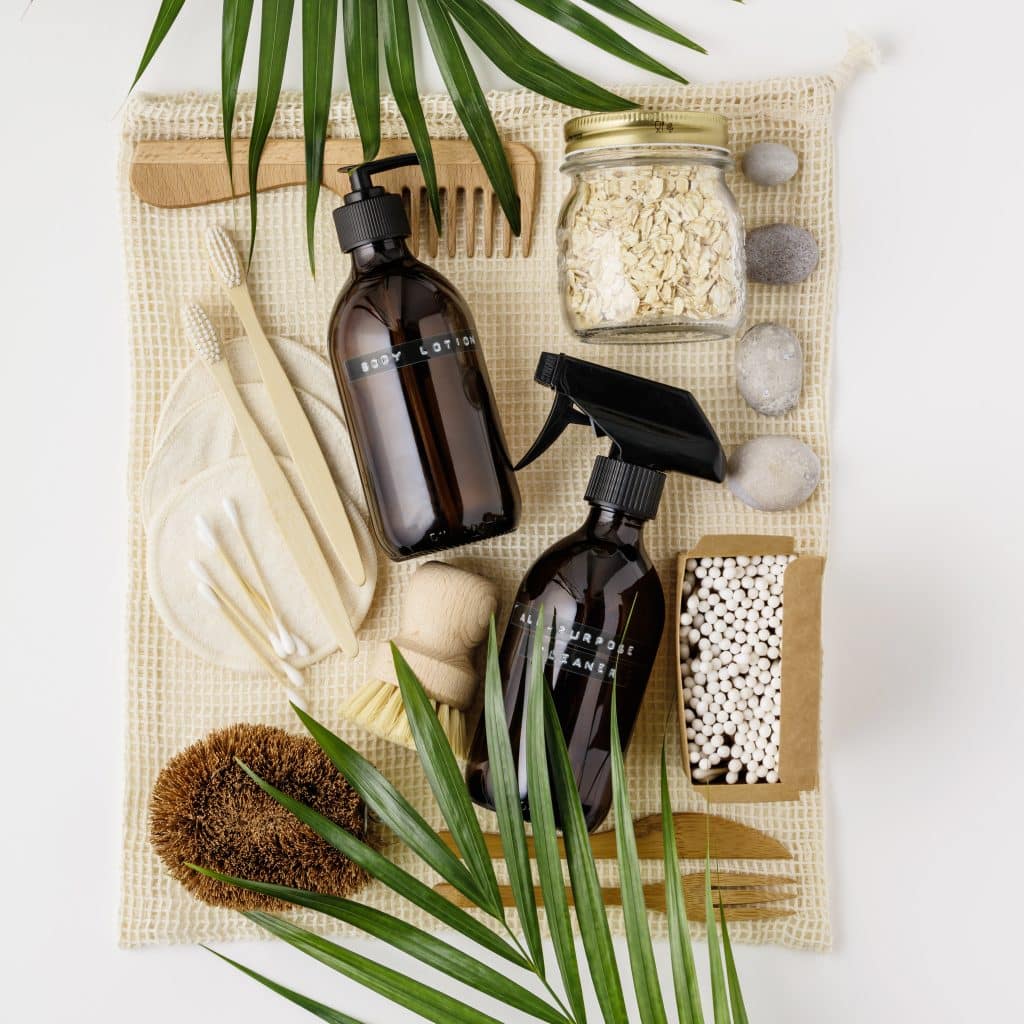
Remove Grease with Baking Soda and Water Paste
For a non-toxic way to tackle greasy kitchen surfaces, make a paste using baking soda and water. Apply the paste to greasy areas, let it sit for a few minutes, and then scrub with a sponge.
This method effectively cuts through grease without the need for harsh chemical degreasers.
Polish Furniture with Olive Oil and Lemon Juice
Commercial furniture polishes often contain harmful chemicals. Create your own non-toxic polish by mixing two parts olive oil with one part lemon juice.
Apply a small amount to a cloth and polish your wooden furniture for a beautiful shine and a pleasant, natural scent.
Clean Drains with Baking Soda and Vinegar
Instead of using harsh chemical drain cleaners, pour half a cup of baking soda down the drain followed by half a cup of white vinegar. Let it fizz and sit for a few minutes, then flush with hot water.
This natural method helps clear clogs and freshens drains without toxic chemicals.
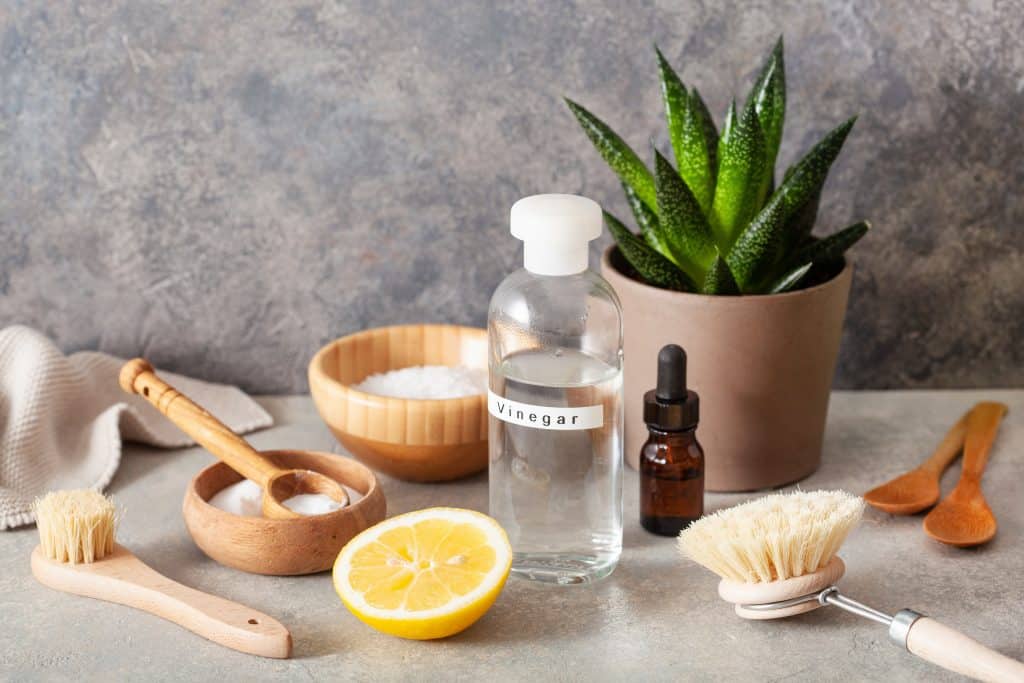
Use Non-Toxic Laundry Detergent
Many conventional laundry detergents contain harsh chemicals that can irritate the skin and degrade indoor air quality.
Opting for non-toxic laundry detergent made from natural ingredients helps protect your skin and keeps your clothes clean without the harmful effects of traditional products. Look for brands that are transparent about their ingredients and environmentally friendly.
Go for Non-Toxic Dish Soap
Your hands come into contact with dish soap multiple times a day, so it’s essential to choose a product that’s free from harmful chemicals.
Non-toxic dish soap made from plant-based ingredients cleans your dishes effectively without leaving any toxic residue. This is one of the easiest non-toxic switches you can make for a healthier kitchen.
Choose Toxin-Free Air Quality Improvements
Improving indoor air quality is crucial for a non-toxic home. Consider adding plants that naturally purify the air, such as spider plants and peace lilies.
Using air purifiers can help remove toxins and allergens from the air, creating a healthier environment for you and your family.
We also can’t overlook the importance of opening windows. Swap your closed windows for open, and recirculate the air in your home every day.
Use Organic Skin Care Products
Our skin absorbs what we put on it, so choosing organic skin care products is a vital step towards a non-toxic home.
Products made with natural ingredients are gentler on your skin and free from the harmful chemicals found in many conventional skin care items. This holistic swap ensures you’re nourishing your skin without any hidden toxins.
You can even swap items like shop bought soaps for homemade ones with natural based ingredients that you have total control over.
- How to Make Sea Moss Soap: Easy and Natural Seamoss Soap Recipe
- Homemade Jasmine and Rose Petal Soap Recipe
- DIY Bergamot Green Tea Soap Bar
- Best Natural Homemade Belly Oil For Pregnancy
Replace Synthetic Fabrics with Natural Fibers
Synthetic fabrics often contain harmful chemicals and are less breathable than natural fibers.
Switching to natural fibers like organic cotton, linen, and wool can reduce your exposure to these toxins and make your home more comfortable and eco-friendly. This non-toxic switch is beneficial for both your health and the environment.
Choose Non-Toxic Paints for Your Home
When painting your home, opt for non-toxic, low-VOC paints. Traditional paints can release volatile organic compounds (VOCs) that contribute to indoor air pollution and can be harmful to your health. Non-toxic paints are a safer alternative that ensures a healthier living space without compromising on color and quality.
Invest in a Water Filtration System
Tap water can contain various contaminants, including chlorine, lead, and other harmful chemicals. Investing in a water filtration system is a non-toxic living hack that ensures you and your family have access to clean, safe drinking water.
This swap not only improves your health but also reduces the need for plastic water bottles, benefiting the environment. If you do use plastic water bottles, switch these to glass or stainless steel.
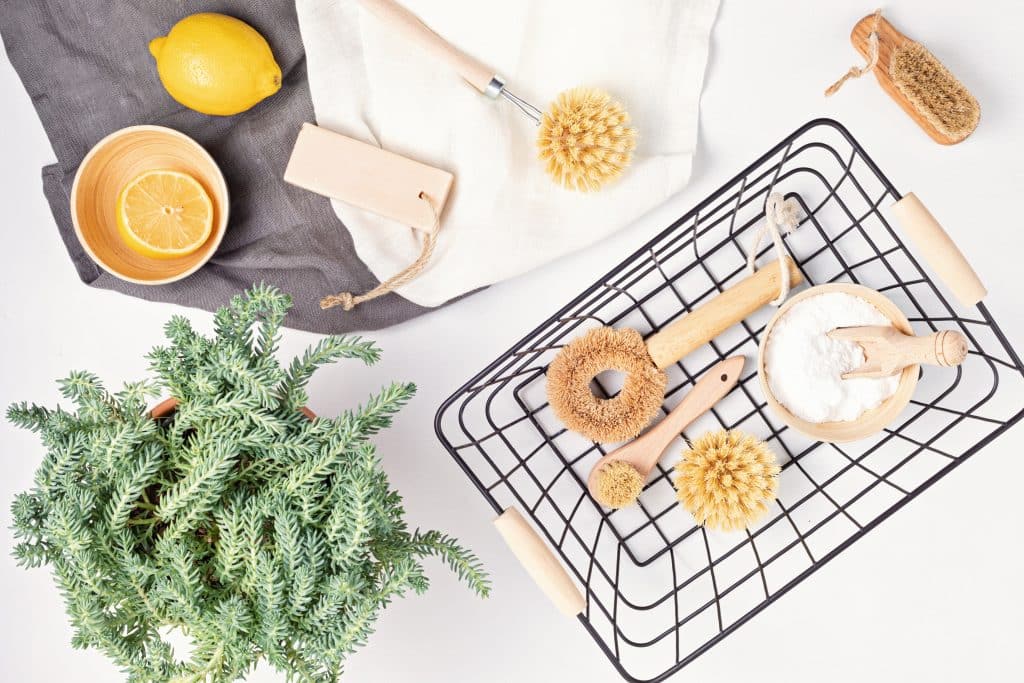
Use Natural Cleaning Cloths
Microfiber cloths and traditional cleaning rags can harbor bacteria and are often treated with chemicals. Switching to natural cleaning cloths, such as those made from organic cotton or bamboo, provides a non-toxic, effective way to clean your home.
These cloths are washable, reusable, and free from harmful chemicals, making them a great addition to your non-toxic household items.
Explore Non-Toxic Shower Cleaners
The best non-toxic shower cleaners are free from harsh chemicals and safe for daily use. They effectively remove soap scum and mildew without compromising your health. Brands like Branch Basics offer non-toxic cleaning solutions that are both powerful and gentle, ensuring your bathroom stays clean and toxin-free.
If you want to make your own, try the combination of 1 cup white vinegar, 1/3 cup of non toxic dish soap, and a few drops of peppermint essential oil, mix and add to a spray bottle.
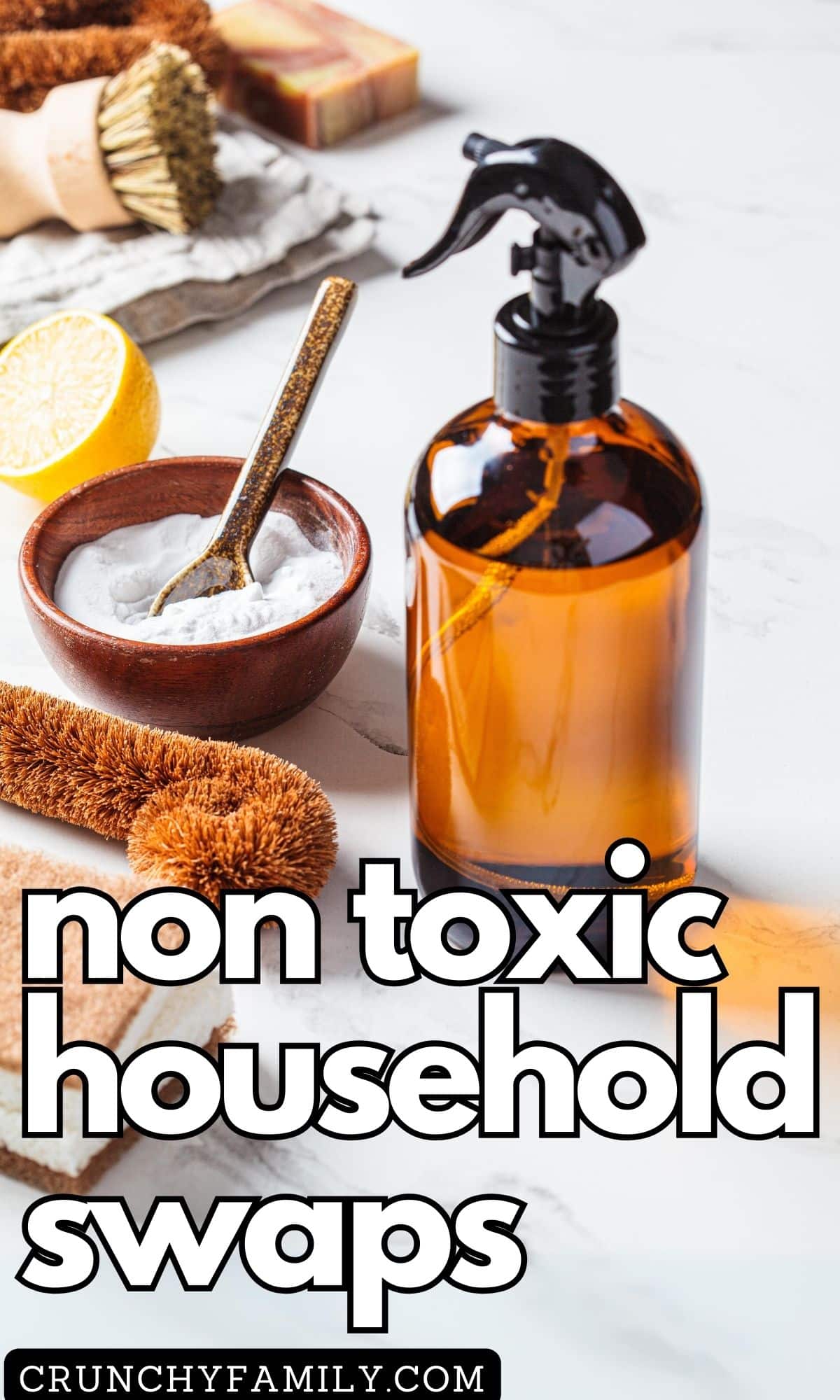
By making these simple swaps, you can transform your home into a non-toxic sanctuary. From replacing toxic cleaning products with natural alternatives to choosing organic cotton and glass food storage, each step you take contributes to a healthier lifestyle for you and your family.
By incorporating these easy non toxic living homemade cleaning solutions into your routine, you can effectively maintain a clean, healthy home without relying on toxic chemicals.
Embrace non-toxic living today and enjoy the benefits of a cleaner, safer non toxic home.
More Natural Living
- Benefits and Natural Uses of Amber Essential Oil
- Why Everyone is Raving About Peppermint Essential Oil (And You Should Too!)
- The Amazing Benefits Of Coconut Oil
- Ways to Use Tea Tree Oil (AKA Melaluca Oil)
If you found these non-toxic household swaps helpful, please share this blog post with your friends and family!
Together, we can create healthier, safer homes for everyone. Spread the word and let’s inspire more people to make simple, effective changes for a toxin-free lifestyle.
Don’t forget to subscribe via email to keep up with all our latest posts.
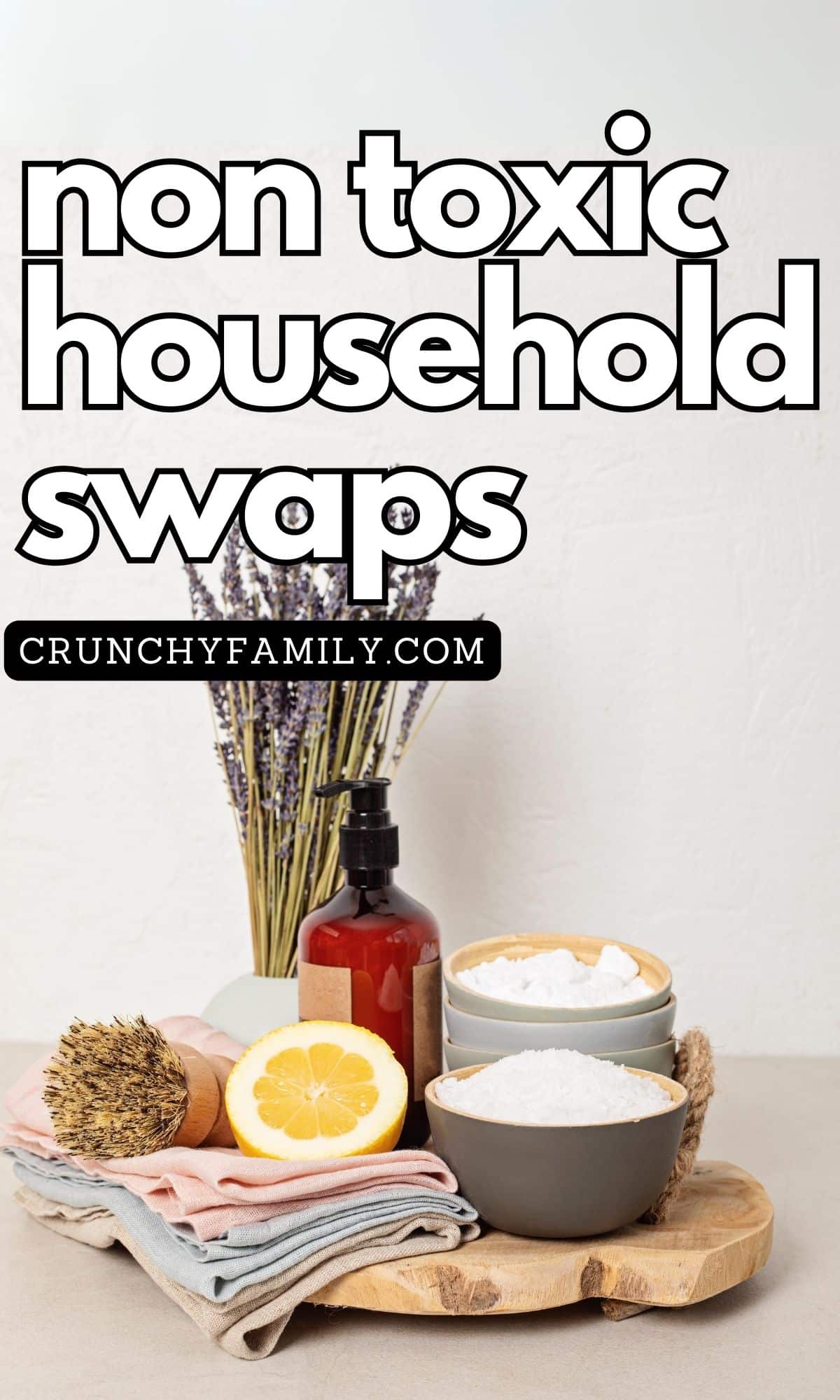
This a very informative article. Sustainable living for preserving the environment is needed now more than ever. I discarded most of my plastic containers for glass ones because of their potentially harmful BPA(bisphenol). Changing the oils or air freshener for a healthier alternative is a bit hard. Living in NYC, cooking scents get trapped in the apartments for longer. But I will try your suggested essential oils. I invested in an air purifying and it is a lifesaver. Thanks for sharing these practical sustainable practices.